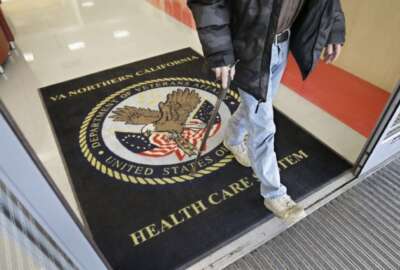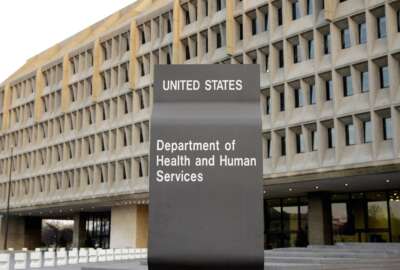Feds heighten calls to service during Public Service Recognition Week
Leaders at OPM and OMB use Public Service Recognition Week as an opportunity to highlight the many job opportunities available across the federal workforce.
Agencies are already familiar with many of the recruitment strategies the Biden administration has been pushing for, but now in the middle of Public Service Recognition Week, the Office of Management and Budget and the Office of Personnel Management are highlighting how those strategies benefit federal job candidates as well.
Recent changes in pooled hiring and the Pathways Program, for instance, can support the overall candidate and employee experience, said Latonia Page, OPM’s acting executive director of the Chief Human Capital Officers (CHCO) Council.
“What that means is that it makes it simpler for you to be able to apply for multiple jobs with a single application, and grow your career in the government,” Page said Wednesday during a webinar hosted by President’s Management Agenda staff.
Page added that early-career opportunities, like internships, are another way to kickstart a civil service career, especially after the parameters around those opportunities recently changed. In April, OPM made a major update to the Pathways Program, expanding eligibility to candidates with more diverse experience and backgrounds.
“We’ve expanded that aperture of who’s eligible,” Page said. “If you’re interested, if you’re in school, or have recently finished school within the past couple of years, you can go to our federal internship portal … and find what intern opportunities are available to you.”
And it’s not just job applicants who can reap benefits of those changing federal recruitment strategies, Page said. They’re also an effort to help agency managers and supervisors connect with qualified candidates.
“It offers an opportunity for our managers and our hiring managers and our leadership to expand our perspective on the talent that we’re bringing in,” Page said. “Does the position that you have need to be someone who is mid-career, or is there an opportunity for us to develop talent and grow them in your organization? So, be open to using some of these programs to fill positions that you need.”
But of course, the government’s hiring process can still be convoluted and complex — especially for those who are new to public service. When Stephanie Grosser, the 988 Suicide and Crisis Lifeline’s technology lead, first looked toward public service, the Presidential Management Fellows program became her clearest path forward.
“I was frustrated trying to make change from the outside and really wanted to just be on the inside making change. I tried really hard to get into the government — I applied a lot on USAJobs, but unsuccessfully,” Grosser, who works at the Substance Abuse and Mental Health Services Administration (SAMHSA), said during the webinar. “Thanks to the PMF program, I was able to gain those skills, and get hired at the U.S. Digital Service … where I spent the next eight years working in many different agencies on public-facing digital projects. I would have never had that opportunity had I not been able to do my rotation as a PMF.”
Often, there’s a stereotype in government that it’s not a place to try new things, or experiment outside the status quo, said Loren DeJonge Schulman, OMB’s associate director of performance and personnel management. But, she added, that’s not the case for many agencies — there are opportunities to innovate and try new things throughout a federal career.
As one example, Damiana Astudillo, the practice lead and senior director of human and community development at the Millennium Challenge Corporation, said she has taken rotational opportunities to try out various fields within public service. With more flexibility, agencies may have a better time recruiting candidates who might be looking for multiple different opportunities throughout their career, rather than staying on a single track.
“I went and did a rotation at OMB, and I was working on issues of improving and advancing equity in service to the federal government, working at that enterprise level,” Astudillo said during the webinar. “This was a change because I wasn’t really used to working on domestic issues, I wasn’t really working with U.S. federal agencies, or on this issue of equity in service. It was a year of amazing learning, taking a lot in and giving what I can.”
But because public servants often aren’t in the spotlight, there can be barriers or frustrations in feds’ careers as well. For Joe Galbo, a social media specialist at the Consumer Product Safety Commission, keeping the interests of the public front of mind is one way to overcome that.
“Using the public as the North Star really does help me keep things in focus,” Galbo said.
OMB and OPM encouraged feds to share their stories, especially during Public Service Recognition Week.
“Recruitment isn’t solely the job of human resources,” OPM’s Page said. “For those of you who are federal employees, we can all be ambassadors in the work that we do.”
“Public service is often a thankless occupation and unrecognized endeavor. It’s one where we have a hard time telling our story because of all of like the important restrictions that we have on the work that we do,” OMB’s Schulman said. “It was important this week that we take that opportunity. I think that by showing that we do every job of the economy, by showing that there are so many pathways … we can help inspire folks.”
Copyright © 2025 Federal News Network. All rights reserved. This website is not intended for users located within the European Economic Area.
Drew Friedman is a workforce, pay and benefits reporter for Federal News Network.
Follow @dfriedmanWFED






